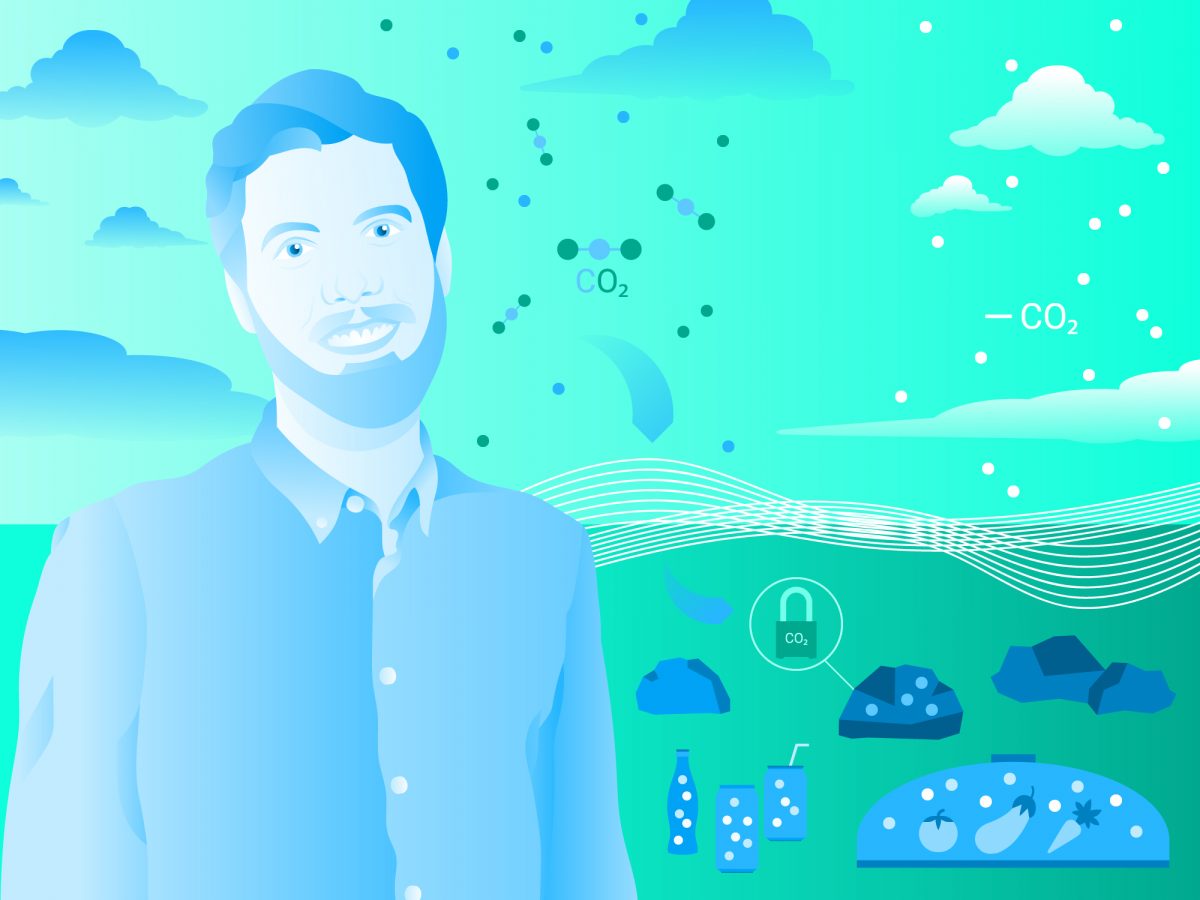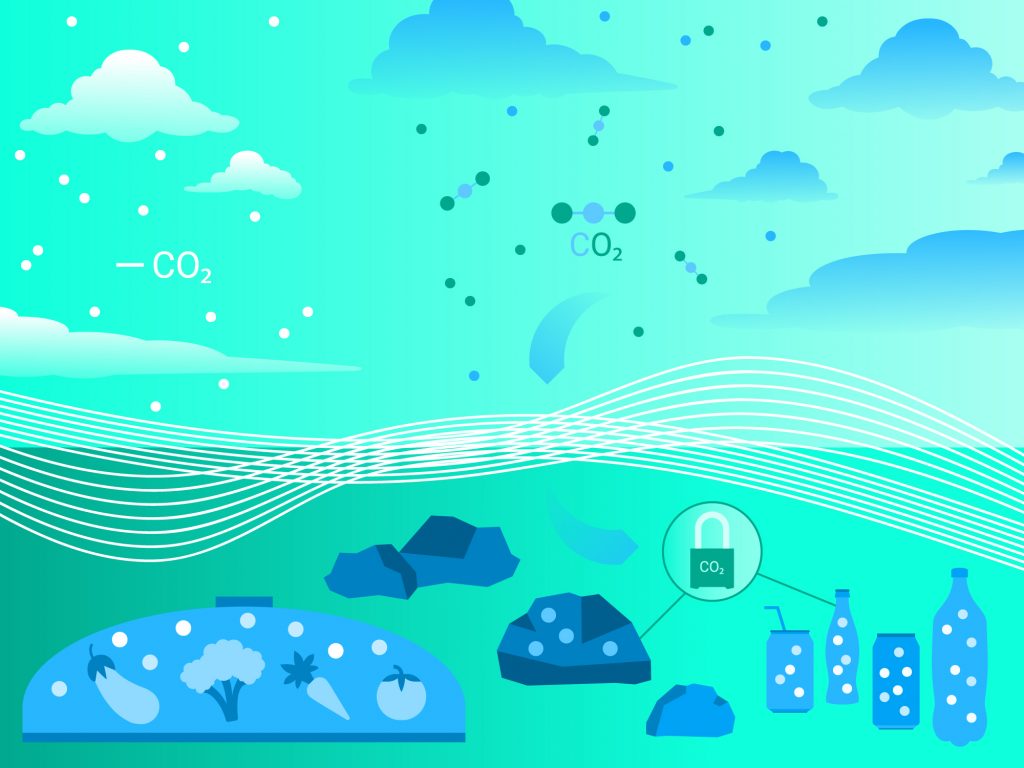
As part of Kaspersky’s Bring on the Future series, we’re meeting businesses around the world who are changing their industry and society for the better.
Rising temperatures on Earth, unfavorable political advancements and worrying predictions about the time we have left to solve the problems. It’s easy to be skeptical about solving the climate change crisis. But, when you look at companies like Climeworks, it’s clear we still have a chance.
Inventors of direct air capture technology – the art of capturing CO2 in giant vacuum cleaner-like units – Climeworks operate 14 plants globally that remove hundreds of tons of CO2 from our atmosphere. This could rise, potentially, to millions in the coming years. I caught up with Sales Manager Nino Berta to find out more.
Ryan: Who started Climeworks? And how did they come to found it?
Nino: Our founders, Christoph Gebald and Jan Wurzbacher, both mechanical engineers, met at ETH Zurich – the Swiss Federal Institute of Technology – in 2003. They had a common goal right from the start: to found a business that can make an impact. During their studies they spent some time in the Swiss alps and noticed the effects of global warming on the glaciers, that’s when the ball started rolling.
They thought, “We’re engineers; we need to invent something that can stop this from happening.” So they developed a direct air capture technology and set out to tackle humanity’s biggest challenge: global warming.
Direct air capture – what is it?
Direct air capture is the technology that we use within our CO2 collector units. These units are essentially large boxes with a fan attached on one side. These fans act like giant vacuum cleaners, sucking in air. Inside the box is a unique filter material, which selectively captures CO2 molecules.
Once the filter has collected enough CO2, the inlet and outlet lids close then the unit heats to 100 degrees Celsius. The CO2 is thereby released and then collected. After that, we either sequester it or sell it to different industries to use in their products.
So, you remove carbon from the atmosphere for businesses and also provide that carbon to specific industries?
Yes, first and foremost, we’re selling CO2 removal as a service. We build the plants, run the plants, and then sell carbon dioxide removal to businesses or people like you and me. Each removal certificate states that we took out a certain amount of carbon dioxide from the atmosphere.
Removing CO2 from the atmosphere is necessary to achieve our climate targets. The Paris Agreement set out a global goal to limit the Earth’s temperature increase by 1.5°C this century. Just switching to renewables will not be enough to reach that goal – we will also have to remove large amounts of CO2 from the atmosphere. With our service, we give companies and individuals the possibility to become pioneers and fight the climate crisis by turning their emissions into stone.
Really? Turning CO2 to stone?
Yes. That’s one of the things we do with CO2 – sequestration. We’ve partnered with a geothermal power plant in Iceland and the CarbFix consortium, who we supply with CO2. The CarbFix team mix our CO2 with water and pump it deep underground into basaltic rock formations. It eventually turns to stone, generally after around two years, so it’s safely and permanently stored.
Aside from that, we offer CO2 to individual industries. For example, we sell CO2 to a greenhouse in Zurich for them to use as an airborne fertilizer. We also provide CO2 to beverage companies – for them to carbonate fizzy drinks – and to renewable fuel makers who use it to create synthetic fuels.
So much carbon; what’s the big vision?

Our overarching vision is to tackle the climate crisis by using direct air capture technology to capture gigatons of CO2 from the atmosphere. On top of this, we’re also branching out to provide different industries with the CO2 we capture. For us, and our technology, CO2 is an infinite resource. When we take it from the atmosphere, as well as sequestering it, we need to give it back to industries who need it so they don’t create any more.
A worthy cause. How does Climeworks differ from similar companies on the market, if there are any?
It’s our duality. Not only are we removing CO2 from the air and sequestering it in some cases, but we’re giving it back to businesses that need it. It’s a closed carbon loop: companies that work with air-captured CO2 can lower their dependency on fossil resources and therefore reduce their carbon footprint.
Aside from that, it’s our dedication to improve our CO2 collectors continually. We have a roadmap for the next ten years on how we’re going to optimize our products.
Interesting, I’ll ask you about that later. In the meantime, what big challenges have you faced so far?
As the creators of the technology, there was always a challenge to persuade businesses about the value it could add. For many companies, they need to understand something before they invest in it. The education gap took a little while to fill, but now companies know what we’re doing and the benefits to them.
There aren’t many regulations in place yet to help us spread our technology. The latest IPCC report said that the world couldn’t reach its climate targets without technologies like ours. So at some point, we need policies that support direct air capture to be able to scale the technology fast enough to become truly climate-relevant.
It seems like you’re on the right track now, though. What’s been your most significant success?
In 2017, we commissioned the world’s first commercial direct air capture plant – it’s in Zurich. Before that, direct air capture only existed in the lab; we were looking at one collector, optimizing that to make it more efficient. Seeing our product go from lab to this scale has been extremely rewarding – not just one collector, but a whole industrial-sized direct air capture plant. It’s capable of collecting 900 tons of CO2 per year, our biggest yet.
What does the future hold for Climeworks? Have you any exciting developments coming up?
We’re continually working to scale up our technology, building cheaper and more efficient machines year on year. Currently, our biggest plant can remove 900 tons of CO2 per year, and now we’re working on a plant with a capacity of several thousand tons per year. After that, we’re already planning different steps to reach our goal to remove climate-relevant amounts of CO2 from the atmosphere – all within the next ten years.




